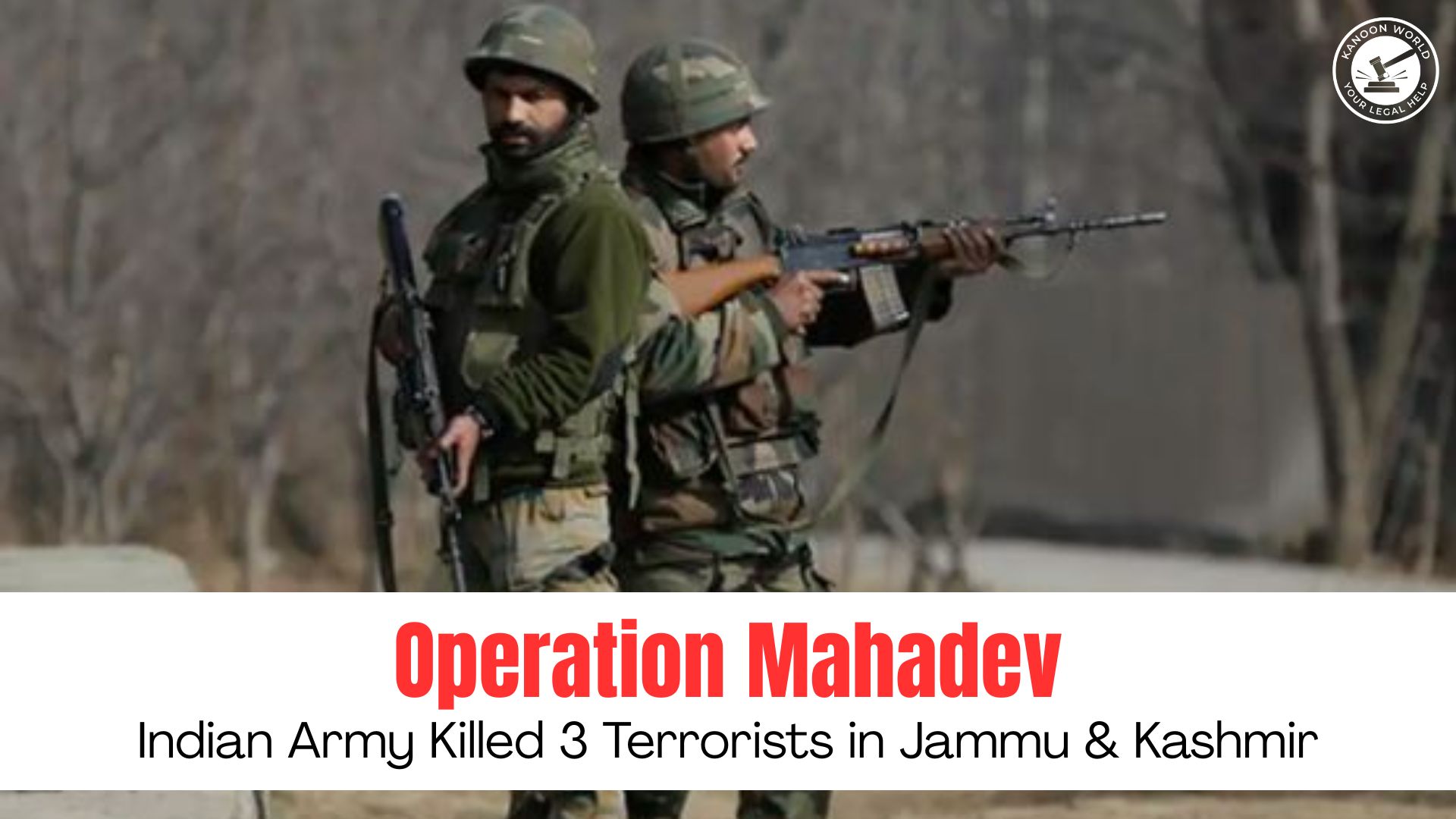A Chinese communication device that turned on two days ago helped Indian security officials track down three terrorists inside the Dachigam forest of Jammu and Kashmir. It took a team of highly-trained personnel less than three hours to complete the mission, resulting in the deaths of the three, who were reportedly linked to the Pahalgam attack, including the mastermind Hashim Musa.

“Those who are gone won’t return, but terror must end. We are proud of the Indian Army.”
“The pain will never go, the closure may never come. But at least now, we can sleep a little better knowing that those who killed my husband are no more.”
These were just some of the reactions from families of the victims of the Pahalgam attack shortly after the Indian Army successfully eliminated three terrorists, including the mastermind of the April 22 tragedy, in an operation dubbed Operation Mahadev on Monday (July 28).
The operation resulting in the deaths of the terrorists, was launched by the Chinar Corps of the Indian Army in the general area of Lidwas in Jammu and Kashmir.
Hours after the operation, the three slain terrorists were identified as Hashim Musa alias Suleiman, widely regarded as the mastermind behind the Pahalgam attack. The other two have also been identified as Yasir, Abu Hamza. All three of them were foreign nationals affiliated with the Pakistan-based terror outfit Lashkar-e-Taiba (LeT).
But how did Indian authorities track these three terrorists down and kill them? What’s the significance of the name behind the operation? We get you all the answers and much, much more.
Tracking the 3 terrorists down
Ever since the April 22 Pahalgam attack in which 26 people were horrifically killed, the security personnel in Kashmir have been on high alert and been searching for any clues to find those involved in the attack.
They finally received a breakthrough 14 days ago when they received suspicious communication. The forces got a clue about a Chinese ultra radio communication being active, after which the operation was carried out. The LeT uses the Chinese radio for encrypted messages and reportedly even used them during the planning and execution of the Pahalgam terror attack.
Then two days ago, the group of terrorists activated the communication device once again, allowing for the security officials to pick up their precise location — the Dachigam forest area. Official sources revealed that local nomads also provided inputs, helping the forces to narrow down the location of the terrorists.

Trapping the three terrorists
Narrowing down their location to the Dachigam forests in Jammu and Kashmir, officials deployed several units in the area to further pinpoint their exact spot. The Dachigam forest has two sides — one extending towards Pahalgam in south Kashmir’s Anantnag district and another connecting Ganderbal district.
Once the terrorists were located, the security personnel launched a drone on Monday in that area to get a clear visual of the terrorists. Once they received visuals, personnel from the Rashtriya Rifles (RR) and Para Special Forces commandos and ascended the Mahadev hill.
Then using the element of surprise, the team encircle the terrorists around 11.30 am and swiftly neutralised them.
An NDTV report states that 45 minutes later, a cleansing operation was launched in a two-kilometre radius of the encounter site. And at 12:45 pm, the terrorists’ bodies were identified and photographed.
Sources told India Today that at the time of the encounter, the terrorists were napping and caught completely unaware.
Weapons, pots at encounter site
Amid the cleansing stage of Operation Mahadev, security troops also recovered weapons from the site. Preliminary reports suggest a US-made carbine, an AK-47, 17 rifle grenades, and other materials were recovered.
For those who don’t know, rifle grenades are explosive devices fired from the barrel or grenade launcher of a rifle, not thrown by hand. They are capable of hitting targets that are over 200 metres away.
The recovery of such weapons indicates that the terrorists were well-equipped and possibly planning another major strike. Eatables and cooking utensils were also spotted at the hideout.

Reactions to Operation Mahadev
The killing of the three terrorists in Operation Mahadev led to many praising and congratulating those involved in it. J&K Lieutenant-Governor Manoj Sinha congratulated the security forces for the Dachigam operation. “The police and security forces can provide more details after the operation will be over. Such operations have been ongoing for several months now, jointly carried out by the J&K Police, Army, and CRPF, in which terrorists are being eliminated.”
Meanwhile, families of the victims of the Pahalgam terror attack said they have received some kind of closure following the killing of the terrorists. Reacting to the news, Vikas Kumrawat, who lost his elder brother in the Pahalgam attack told PTI, “We were thinking for a long time why the terrorists involved in the Pahalgam attack have not been caught yet? We are very happy and relieved with the news of the army killing the mastermind of this attack. This action is a special achievement of our government and the army.”
In Haryana’s Nawal, Rajesh Narwal, father of slain Indian Navy officer Lt Vinay Narwal, praised the Armed Forces for their bravery. “I want to salute the Army, our paramilitary and J-K police jawans for their bravery,” said Rajesh Narwal. “The way they did not care for their lives and hunted them down is not an easy task. I salute them for their bravery. They should be honoured for this,” he further said.
Significance of name behind Operation Mahadev
Carried out jointly by the Indian Army, Jammu and Kashmir Police and the CRPF, what’s the reasoning behind the name of the operation?
The choice isn’t just symbolic but also tactical. That’s because it took place near Mahadev peak, which is part of the Zabarwan Range and holds both strategic and spiritual value.
Kashmiri folklore states that this is the path that Lord Shiva took to reach the Amarnath Cave, where he related the Amar Katha (the tale of immortality) to Goddess Parvati.




